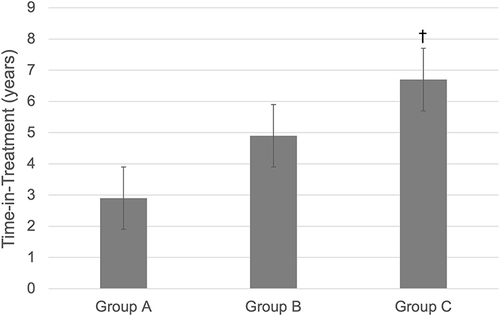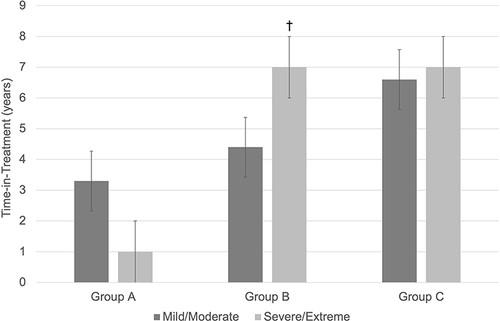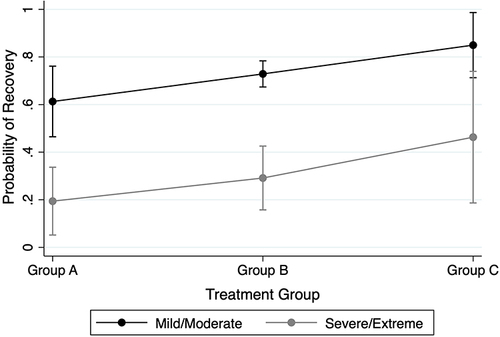Figures & data
Table 1 Descriptive Statistics for the Total Sample and Within Experimental Groups (Counts (%) or Means (SDs))
Table 2 Parameter Estimates Predicting Documented Time-in-Treatment (in Years) Using Robust Linear Regression
Figure 1 Mean documented time-in-treatment across treatment groups.

Figure 2 Mean documented time-in-treatment across treatment groups, stratified by disease severity.

Table 3 Parameter Estimates (Odds Ratios) Predicting Weight Restoration Using a Generalized Linear Mixed-Effects Model
Figure 3 Probability of weight restoration in anorexia nervosa recovery among treatment groups stratified by disease severity.

Table 4 Parameter Estimates (Odds Ratios) Predicting Anorexia Nervosa Recovery Using Markov Transition Model
